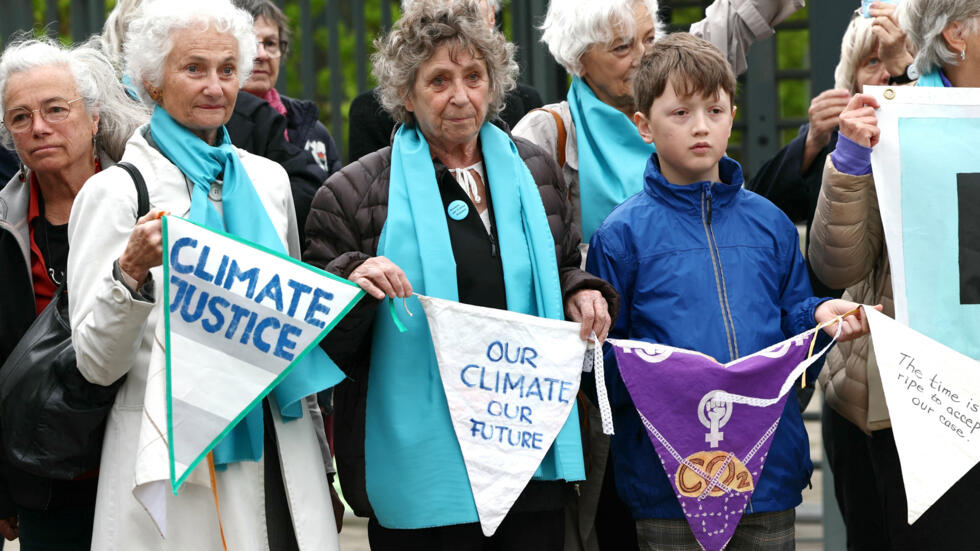In Verein Klimaseniorinnen Schweiz and Others v Switzerland (“KlimaSeniorinnen”), the European Court of Human Rights (ECtHR) makes many general statements about the nature of climate change and different actors’ roles in addressing it. For example, ‘the Court notes that climate change is one of the most pressing issues of our times’ (para 410), thus conveying to the public that the ECtHR takes the issue very seriously. There are also general statements regarding the separation of powers and the role of courts (e.g., ‘Judicial intervention, including by this Court, cannot replace or provide any substitute for the action which must be taken by the legislative and executive branches of government’ (para 412)) which appear to be intended to assuage concerns by States about interventionist courts.
Many of these general points have been addressed in this blog symposium. In my blog post, I turn to a more technical aspect of the judgment, namely the question of causation. I will untangle the analytical gymnastics that the Court performs regarding this question. I will argue that the reasoning regarding causation is confusing and that it is not clear how specifically the ‘real prospect’ test is applied for finding a breach.
Different causal relationships
KlimaSeniorinnen is the first judgment where the ECtHR devotes whole sections to the question of causation. As shown here and here, causation has not been a standard that the Court has previously given much attention to, nor consistently developed in its case law on positive obligations under the European Convention on Human Rights (ECHR). However, in KlimaSeniorinnen, the Grand Chamber addresses causation upfront, given that the applicants’ claims were unprecedented in that they implied modification (one can also choose the much more neutral term ‘development’ instead of ‘modification’) of the established standards. In this sense, the statement in para. 422 that ‘it would be neither adequate nor appropriate to follow an approach consisting in directly transposing the existing environmental case-law to the context of climate change’ is very apt.
In para. 415 of its judgement, located in Section III. C.1. (Preliminary points), the ECtHR summarizes the characteristics of its previous environmental case law (also called ‘classic environmental cases’ in para. 424):
The Court’s existing case‑law in environmental matters concerns situations involving specific sources from which environmental harm emanates. Accordingly, those exposed to that particular harm can be localised and identified with a reasonable degree of certainty, and the existence of a causal link between an identifiable source of harm and the actual harmful effects on groups of individuals is generally determinable. Furthermore, the measures taken, or omitted, with a view to reducing the impugned harm emanating from a given source, whether at the regulatory level or in terms of implementation, can also be specifically identified. In short, there is a nexus between a source of harm and those affected by the harm, and the requisite mitigation measures may be identifiable and available to be applied at the source of the harm (emphasis added).
This paragraph references at least two causal relationships that need to be distinguished. The first is the link between a cause and actual harm (i.e., the effect). The second is the link between measures and elimination (or mitigation) of the cause.
In the following paragraphs (416-422), where the Court explains (and correctly so) the distinguishable characteristics of the climate change case compared to the previous environment-related cases, there is a constant oscillation between these two causal relationships. They reflect the difference between the existence of harm, which is normally beyond question, and what we as a society decide to do about it (i.e., what measures should be undertaken as a matter of human rights law obligations). There is a tension here, which explains the oscillation, given the idealistic aspirations and aims of human rights, on the one hand, and the practical and societal limitations as to what measures/means to choose to achieve these aims and whether these measures should be the content of any legal obligations, on the other.
The Court observes that ‘the specificity of climate‑change disputes, in comparison with classic environmental cases, arises from the fact that they are not concerned with single‑source local environmental issues but with a more complex global problem’ (para 424). This might be the case regarding the first of the above-mentioned links. However, ‘classic environmental cases’ also raise complexities as to the variety and multiplicity of measures that could have been adopted to eliminate the cause. In this sense, the omitted measures (measures that could have been taken) are not that easy to identify (even more so specifically identify). There is, therefore, no sharp distinction; the difference is possibly one of degree. More generally, this variety and multiplicity of measures that could be adopted to address the cause are the content of States’ positive obligations. This content consists of a variety of measures, and States can make choices about which measures to undertake (see here).
In para. 424, the Court tries to explain the complexities of the causation question in human rights law by distinguishing its different dimensions: ‘In the context of human rights‑based complaints against States [in ‘climate change disputes’], issues of causation arise in different respects which are distinct from each other and have a bearing on the assessment of victim status as well as the substantive aspects of the State’s obligations and responsibility under the Convention.’ The Court continues in para 425 to identify four dimensions of the causation question:
The first dimension of the question of causation relates to the link between GHG emissions – and the resulting accumulation of GHG in the global atmosphere – and the various phenomena of climate change. This is a matter of scientific knowledge and assessment. The second relates to the link between the various adverse effects of the consequences of climate change, and the risks of such effects on the enjoyment of human rights at present and in the future. In general terms, this issue pertains to the legal question of how the scope of human rights protection is to be understood as regards the impacts arising for human beings from an existing degradation, or risk of degradation, in their living conditions. The third concerns the link, at the individual level, between a harm, or risk of harm, allegedly affecting specific persons or groups of persons, and the acts or omissions of State authorities against which a human rights‑based complaint is directed. The fourth relates to the attributability of responsibility regarding the adverse effects arising from climate change claimed by individuals or groups against a particular State, given that multiple actors contribute to the aggregate amounts and effects of GHG emissions.
Let’s unpack these four dimensions.
The first dimension
According to the Court’s reasoning, the first dimension is about ‘scientific knowledge and assessment’, which is later reframed as ‘issues of proof’ (para 427-420). The assertion, however, that the assessment of the link between a cause and harm is merely ‘a matter of scientific knowledge,’ is not correct. While the assessment does depend on scientific knowledge, it is also equally dependent on normative decisions on what measures to take to respond to risks (on the distinction between legal causation and natural causation, see e.g. Steel page 41); these decisions are often reflected in domestic laws and international standards. In this sense, the reiteration of how the Court ‘attaches importance to the fact the situation complained of breached the relevant domestic law’ and to ‘relevant international standards’ (para 428) is very apt. In this sense, ‘issues of proof’ and, more specifically, the proof about the link between GHG emissions and ‘the various phenomena of climate change’ are not determined exclusively with reference to ‘scientific knowledge.’ As argued here, in its positive obligations case law, the Court has used domestic law and international legal standards as proxies for scientific knowledge. In this sense, knowledge and proof in human rights law are as much legal/normative questions as scientific questions.
The second dimension
The second dimension of the causation question is framed by the Court as the ‘effects of climate change on the enjoyment of Convention rights’ (para 431 – 436). Within this aspect, the Court addresses the harm of climate change on ‘the lives, health and well-being of individuals’ (para 433) and ‘a link between the adverse effects of climate change and the enjoyment of (various aspects of) human rights’ (para 435). As per para 425, this is perceived in the reasoning to be ‘a legal question’. It is a legal question since it is ultimately about the definitional scope of the rights (see here), i.e., the normative decision as to how broadly the interests protected by these rights should be interpreted.
The key here is the expansion of these interests to include not only actual harm but also risks of harm. In this sense, human rights law is further modeled as a body of law about risk regulation. The Court tries to qualify this with reference to ‘sufficiently severe risks of such effects on individuals’ (emphasis added). In para. 487-488, guidance is offered as to the severity threshold in climate change-related cases. According to the court, there must be ‘a high intensity of exposure to the adverse effects of climate change, that is, the level and severity of (the risk of) adverse consequences of governmental action or inaction affect the applicant must be significant’ and ‘a pressing need to ensure the applicant’s individual protection.’ These guidelines pertain to the victim status.
Having in para 435 determined that the interests protected by the ECHR rights include risk aversion, the Court concludes this paragraph by adding that ‘issues of causation must always be regarded in the light of the factual nature of the alleged violation and the nature and scope of the legal obligations at issue.’ It is unclear exactly what this means. A possible explanation might be that, since the ‘alleged violation’ (i.e., the adversely affected interests) is about risk, this will necessarily change ‘the nature and scope of the legal obligations.’ Such a change seems to be necessary since the obligations would have to be about risk regulation.
This, as confirmed by para. 436, reveals that this second dimension is not considered in isolation. It is intertwined with considerations as to whether states have obligations and their scope (see here how the questions as to whether there is a positive obligation, what its scope might be, and whether it is breached collapse into each other).
The third dimension
The third dimension of the causation question is about ‘the link, at the individual level, between a harm, or risk of harm, allegedly affecting specific persons or groups of persons, and the acts or omissions of State authorities against which a human rights‑based complaint is directed (emphasis added)’ (para 425). I will not unpack each sentence in the reasoning where the Court explains this third dimension. Three things are clear, however, from para 437-440, where this third dimension is elaborated upon. First, even at the individual level, the assessment is about the risk that ‘sufficiently close[ly]’ affects the applicant. Second, the Court tries again to invoke a severity threshold since the assessment depends on ‘a threshold of severity of the risk of adverse consequences on human lives, health and well-being’ (para 440). Third, risk is not considered in isolation. Similarly to what was stated above, it is intertwined with considerations as to whether states have obligations and what their scope could be.
Further guidance on the severity threshold is offered in paras 513 and 519, where the ECtHR discusses the definitional scope of Articles 2 and 8 respectively. As to Article 2, the ECtHR notes that there must be ‘real and immediate’ risk to life, a test that ‘may be understood as referring to a serious, genuine and sufficiently ascertainable threat to life, containing an element of material and temporal proximity of the threat to the harm complained of by the applicant.’ As to Article 8, the threshold is set as ‘serious adverse effects of climate change on their [the applicants’] life, health, well-being and quality of life.’
The fourth dimension
The fourth dimension of the causation question ‘relates to the attributability of responsibility regarding the adverse effects arising from climate change claimed by individuals or groups against a particular State, given that multiple actors contribute to the aggregate amounts and effects of GHG emissions. (para 425)’ In para 441-444, this ‘attributability’ is reframed as ‘the issue of proportion of State responsibility.’ It is difficult to disentangle all the issues that the Court throws in here (attributability, responsibility, concurrent responsibility, jurisdiction, capabilities). What is perhaps most striking is how the Court discusses responsibility without first addressing whether there are any obligations to start with and what their content and scope might be.
The ECtHR does affirm the ‘real prospect’ causation test in para 444. This test has nothing to do with ‘proportion of State responsibility’ as related to any responsibility or obligations of other States. The test demands that for a breach of a positive obligation to be found, it needs to be demonstrated that the measure that arguably forms the content of the obligation and that the State should have undertaken at the relevant point in the past had ‘a real prospect of altering the outcome or mitigating the harm.’ Interestingly, the Court says nothing here about risk of harm or any possible modification of the test given the emphasis on risk. Even more interestingly, after being mentioned in para 444, the ‘real prospect’ test is completely forgotten till the very end of the judgment. One can only remain to wonder about its role in actually finding a breach of Article 8.
Conclusion
The KlimaSeniorinnen judgment contains some useful statements about the role of causation in human rights law. The Court distinguished four dimensions of the causation question. The most important one, from the perspective of positive obligations that are based on omissions, concerns the causal link between the allegedly omitted measures and the elimination (or mitigation) of the cause of the harm. At a general level, it was established that the measures should have ‘a real prospect of altering the outcome or mitigating the harm’ so that their omission can lead to a violation. It will be interesting to continue to observe how this ‘real prospect’ text will continue to be developed in the case law.

Vladislava Stoyanova
Vladislava Stoyanova, Associate Professor, Faculty of Law, Lund University, Sweden.





